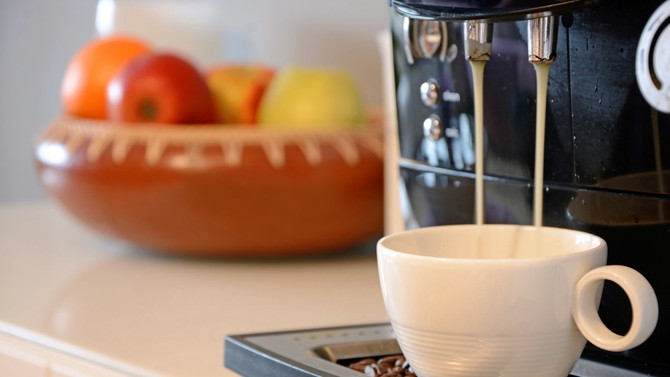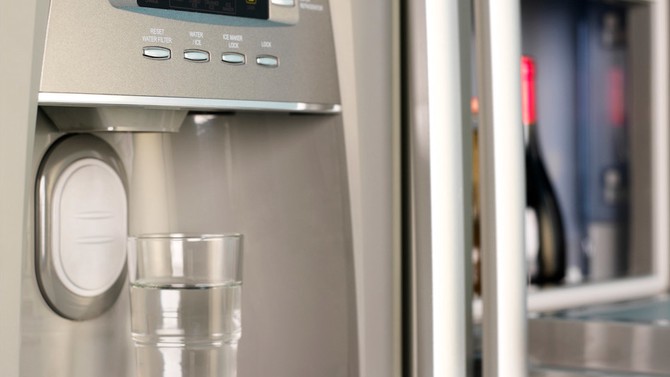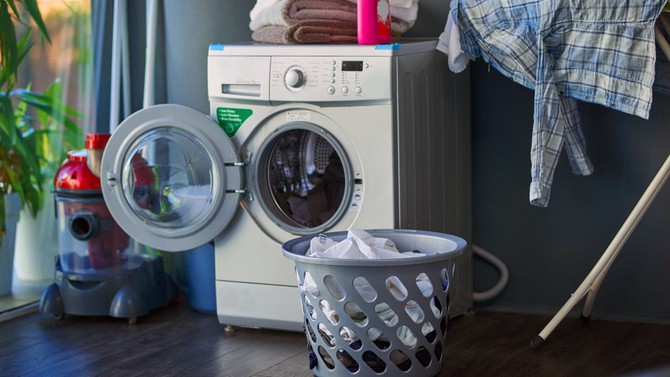6 Things You've Probably Never Washed, but Should
Here are the appliances, parts of your home and even a workout accessory that are probably way dirtier than you think.
By Lynn Andriani

Photo: iStock/JazzIRT
The Not-Always-So-Cool Machine That Cools Your Drinks
If you've ever taken a sip of ice water at home and noticed it tastes funny, or that the cubes themselves feel softer or melt more quickly, it may be because your freezer's ice maker needs a cleaning. The cubes can absorb odors from stinky or spilled foods in the freezer, and hard water can cause mineral deposits on the mechanism, which can affect the ice quality. To clean the maker, The Laundress co-founders Gwen Whiting and Lindsey Boyd say the first step is to lift the "power" bar (it rises automatically when the bin is full), so the machine stops making ice. Remove the bin and dump the ice into the sink (fill it with hot water to remove any stuck-on pieces). Next, wash the bin with dish detergent and hot water. As for the ice maker unit itself, wipe it with a cloth and surface cleaner (or a 50/50 mixture of distilled white vinegar, if you see scaly deposits). Make sure it's dried well, then replace the bin, lower the power bar and let the machine make new—gorgeously clean!—ice.

Photo: iStock/asbe
The Part of Your Window No One Notices
Since the weather-stripping (which keeps out drafts) on many windows is black, you may not even notice the grime that accumulates there. Becky Rapinchuk, aka the homekeeping expert Clean Mama and author of Simply Clean, advises wiping the area down with white vinegar twice a year to keep the tracks clean. And if you look at the weather-stripping and think you see mold—which happened to Rapinchuk's friend, who thought to look for it only after seeing an allergist about her nonstop sneezing—you may want to call a professional.

Photo: iStock/Madzia71
The Seemingly No-Mess Coffeemaker
Pod-based coffee machines, like Keurig, make it so easy to brew a cup of joe that you rarely have to think about them, but as their owner's manuals attest, they should be cleaned of mineral deposits regularly. Many of these brands sell their own descaling kits, but Rapinchuk has a homemade solution. Every two months she fills the coffeemaker's reservoir about halfway with white vinegar, or, depending on the model, pours 10 ounces into its water chamber. She runs the machine as if she would if she were making a cup of coffee—without inserting a pod, so only the vinegar solution goes through the machine—then runs it a few more times using water instead of vinegar, until the vinegar smell has disappeared. (You may first want to check your owner's manual to see if your model has any warnings against using vinegar before attempting this.)

Photo: iStock/dima_sidelnikov
The Mat That Keeps You Zen (and Catches Your Sweat)
Fungus and bacteria are just a few of the living things you may find on yoga mats. Even if you only use your own mat (and not a borrowed one at a studio), you'll still want to be diligent about maintaining its cleanliness. Whiting and Boyd recommend wiping yours down with a solution of 1/4 cup vinegar and 1 cup of warm water in a spray bottle. Spray both sides of the mat, wipe dry with a cloth and allow to dry completely before rolling it up for storage.

Photo: iStock/akdemirhk
The Convenient Yet Germy Hydration Station
Water-dispensing refrigerators make it easy to enjoy a cold drink anytime, but they can be among the germiest places in most kitchens. A 2013 study by NSF International, a public health and safety organization, found that the yeast and mold that grow on and in water dispensers can be of particular concern for people with allergies. Refer to your fridge's owner's manual for specific instructions on cleaning the interior mechanism. And don't forget the outside; Dana K. White, of ASlobComesClean.com and author of Decluttering at the Speed of Life, says she regularly wipes down the part where the rim of a drinking glass touches. A half-and-half mixture of distilled vinegar and water should do the trick.

Photo: iStock/PeopleImages
The Clean Machine
Surprise! The washing machine itself needs an occasional cleaning, thanks to build-up of detergent, fabric softener, dirt and dead skin cells. (High-energy and front-loading machines are especially susceptible to mildew, according to the experts at The Laundress.) While commercial washing-machine cleaners are available, they recommend regularly running a "rinse" load of hot water and bleach.
Published 07/27/2018

